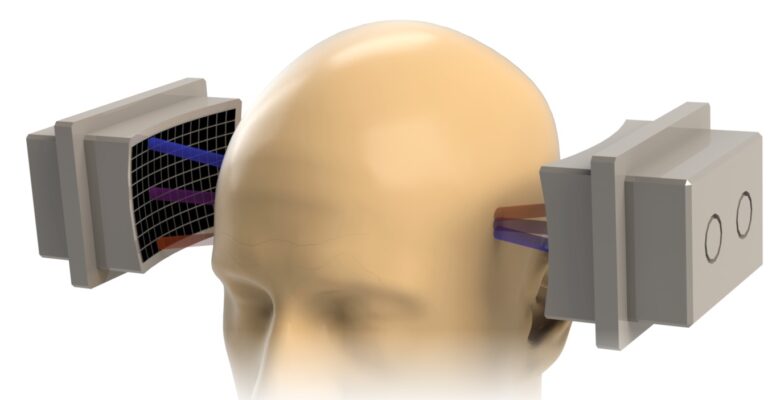Transcranial focused ultrasound provides a new set of approaches to noninvasively manipulate neural activity in spatially specific deep brain targets. However, clinical translation has been impeded by challenges associated with ultrasound distortions by the skull, lack of flexible targeting, and the complexity and cost of transducer to subject registration. These issues reduce the control over the delivery of ultrasound to brain areas of interest, thus limiting the safety and effectiveness of therapeutic applications. This study develops approaches and their device implementation that overcomes these barriers.
The device delivers ultrasound through the temporal and parietal skull windows, which minimize the attenuation and distortions of the ultrasound by the skull. The device consists of 252 independently controlled elements, which provides the ability to modulate multiple deep brain targets at a high spatiotemporal resolution, without the need to move the device or the subject. The device can steer the focal point through beamforming to modulate targets within a relatively broad treatment envelope. And finally, the device uses a mechanical registration method that enables accurate deep brain targeting both inside and outside of the MRI. Using this method, a single MRI scan is necessary for accurate targeting; repeated subsequent treatments can be performed reproducibly in an MRI-free manner.
We validated each of these functions in-vitro and then deployed the device in two patients with major depression. The stimulation modulated mood states and was well tolerated with no adverse events.

